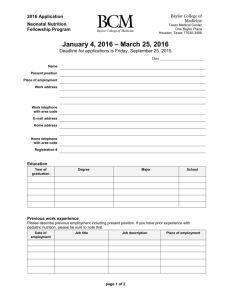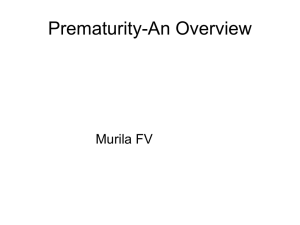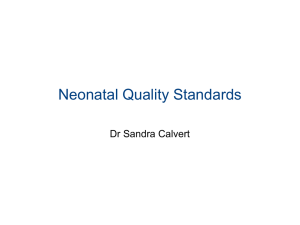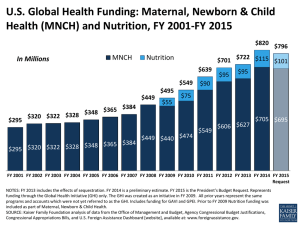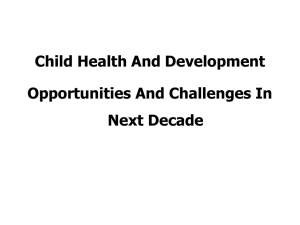Modi slides - National Confidential Enquiry into Patient Outcome
advertisement
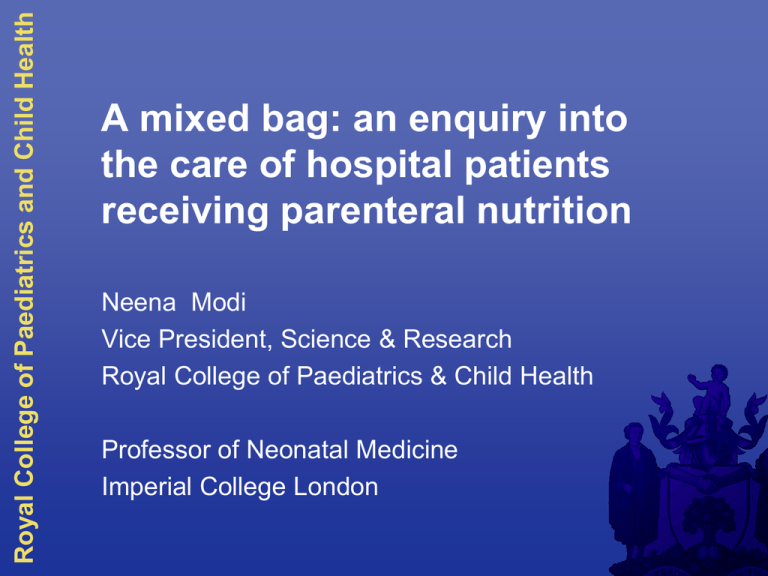
Royal College of Paediatrics and Child Health A mixed bag: an enquiry into the care of hospital patients receiving parenteral nutrition Neena Modi Vice President, Science & Research Royal College of Paediatrics & Child Health Professor of Neonatal Medicine Imperial College London Disclosures Views of Expert Group members and advisors sought Neonatal clinician in a tertiary centre Lead a research programme involving newborn nutrition Advised the Chief Pharmacist’s survey of neonatal PN in 2008/9 What we knew Essential is the smallest, sickest babies The target is growth, not correction of malnutrition Standard regimens feasible Often Partial (not Total) PN, bridging the gap to full milk feeds Documentation poor and variable Prescribing and dispensing processes variable Complications common Babies are neither small children nor adults Some 1,500 to 3,000 babies receive PN in the UK each year Confidential enquiries “The purpose of a confidential enquiry is to detect areas of deficiency in clinical practice and devise recommendations to resolve them; enquiries can also make suggestions for future research programmes” 24% 12 babies Documentation Adequacy of first Parenteral Nutrition Key findings “Good practice”, defined as a “standard that you would accept from yourself, your trainees and your institution”, identified in 24% (62/264) of neonatal cases Delay in recognising need for PN in 28% Delay in starting PN once decision made in 17% Poor documentation in 72% First PN provided considered inadequate in 37% Metabolic monitoring inadequate in 19% Principal recommendations Prompt consideration of need for PN, start without delay First PN must be appropriate to neonate’s needs Close monitoring essential Neonatal units should have policies for documentation Team approach Consensus on best PN practice Education, audit and training needed NICE guidelines for nutritional support needed Central hospital record of patients receiving PN Attention to vascular line care What was missing? Details of prescribing and dispensing practice (Chief Pharmacist’s 2009 Study) Denominators (how many babies should have received PN?) Controls (were complications reliably attributable to PN?) Details of concurrent milk feeds (was nutritional support really poor?) A sense of what variation in practice there was among assessors (was the enquiry consistent?) Acknowledgement that the evidence base is poor Possible questions Are process or outcome measures the best means for neonatal services to evaluate their practice? What specific measures should be audited? Is adequacy of PN the right question? Which processes (prescribing, preparing, dispensing, delivering) require standardisation? What is the research gap? Optimal growth targets are not known Preterm nutrition is Controversial Variable Poorly evidenced Focused on growth outcomes even though the optimal pattern of growth is unknown Optimal nutrient requirements for preterm babies are not known • Intrauterine nutrient provision • lipid - minimal • glucose - moderate • amino acid - high • Postnatal nutrient provision • lipid - high • glucose - high • protein - low Other dangers Parenteral nutrition, (whether administered centrally or peripherally) (IRR 13.8, 95% CI 8.5 to 22.3, p<0.001) and gestational age < 26 weeks (IRR 2.4, 95% CI 1.7 to 3.5, p<0.001) are the highest significant independent risk factors for newborn late onset blood stream infection (Modi et al 2006) The tightrope of preterm nutrition support Not too much, not too little, but just right NEON (Nutritional Evaluation and Optimisation in Neonates trial) commenced recruitment June 2010 Our conclusions The call to improve practice is welcomed The focus on the newborn and on children is applauded The need for consistency of prescribing, dispensing, delivering and documenting is strongly supported Preterm nutrition is experimental, research is needed Beware the implementation of nutritional guidance that lacks an evidence base Food for thought Target methodology to specific patient group Denominator capture Appropriate controls A priori definition of “best practice” Links to other initiatives Specific audit recommendations Delineation of the research gap
